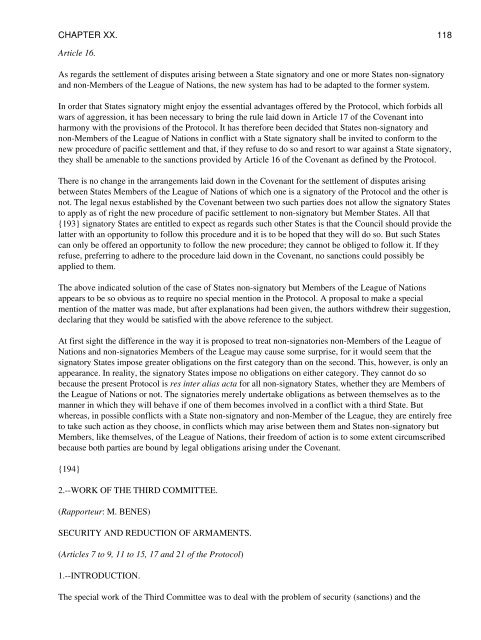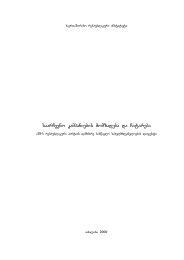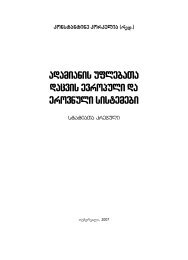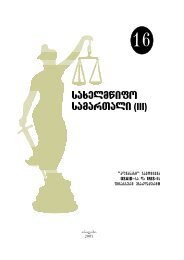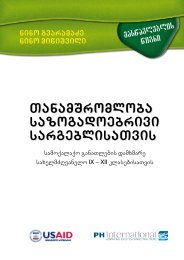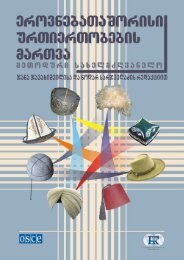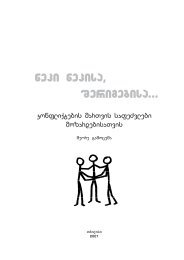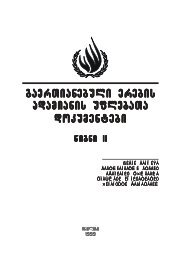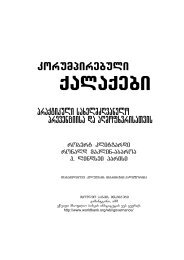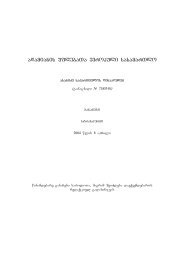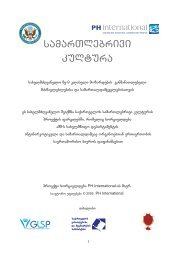The Geneva Protocol, by David Hunter Miller
The Geneva Protocol, by David Hunter Miller
The Geneva Protocol, by David Hunter Miller
Create successful ePaper yourself
Turn your PDF publications into a flip-book with our unique Google optimized e-Paper software.
CHAPTER XX. 118<br />
Article 16.<br />
As regards the settlement of disputes arising between a State signatory and one or more States non-signatory<br />
and non-Members of the League of Nations, the new system has had to be adapted to the former system.<br />
In order that States signatory might enjoy the essential advantages offered <strong>by</strong> the <strong>Protocol</strong>, which forbids all<br />
wars of aggression, it has been necessary to bring the rule laid down in Article 17 of the Covenant into<br />
harmony with the provisions of the <strong>Protocol</strong>. It has therefore been decided that States non-signatory and<br />
non-Members of the League of Nations in conflict with a State signatory shall be invited to conform to the<br />
new procedure of pacific settlement and that, if they refuse to do so and resort to war against a State signatory,<br />
they shall be amenable to the sanctions provided <strong>by</strong> Article 16 of the Covenant as defined <strong>by</strong> the <strong>Protocol</strong>.<br />
<strong>The</strong>re is no change in the arrangements laid down in the Covenant for the settlement of disputes arising<br />
between States Members of the League of Nations of which one is a signatory of the <strong>Protocol</strong> and the other is<br />
not. <strong>The</strong> legal nexus established <strong>by</strong> the Covenant between two such parties does not allow the signatory States<br />
to apply as of right the new procedure of pacific settlement to non-signatory but Member States. All that<br />
{193} signatory States are entitled to expect as regards such other States is that the Council should provide the<br />
latter with an opportunity to follow this procedure and it is to be hoped that they will do so. But such States<br />
can only be offered an opportunity to follow the new procedure; they cannot be obliged to follow it. If they<br />
refuse, preferring to adhere to the procedure laid down in the Covenant, no sanctions could possibly be<br />
applied to them.<br />
<strong>The</strong> above indicated solution of the case of States non-signatory but Members of the League of Nations<br />
appears to be so obvious as to require no special mention in the <strong>Protocol</strong>. A proposal to make a special<br />
mention of the matter was made, but after explanations had been given, the authors withdrew their suggestion,<br />
declaring that they would be satisfied with the above reference to the subject.<br />
At first sight the difference in the way it is proposed to treat non-signatories non-Members of the League of<br />
Nations and non-signatories Members of the League may cause some surprise, for it would seem that the<br />
signatory States impose greater obligations on the first category than on the second. This, however, is only an<br />
appearance. In reality, the signatory States impose no obligations on either category. <strong>The</strong>y cannot do so<br />
because the present <strong>Protocol</strong> is res inter alias acta for all non-signatory States, whether they are Members of<br />
the League of Nations or not. <strong>The</strong> signatories merely undertake obligations as between themselves as to the<br />
manner in which they will behave if one of them becomes involved in a conflict with a third State. But<br />
whereas, in possible conflicts with a State non-signatory and non-Member of the League, they are entirely free<br />
to take such action as they choose, in conflicts which may arise between them and States non-signatory but<br />
Members, like themselves, of the League of Nations, their freedom of action is to some extent circumscribed<br />
because both parties are bound <strong>by</strong> legal obligations arising under the Covenant.<br />
{194}<br />
2.--WORK OF THE THIRD COMMITTEE.<br />
(Rapporteur: M. BENES)<br />
SECURITY AND REDUCTION OF ARMAMENTS.<br />
(Articles 7 to 9, 11 to 15, 17 and 21 of the <strong>Protocol</strong>)<br />
1.--INTRODUCTION.<br />
<strong>The</strong> special work of the Third Committee was to deal with the problem of security (sanctions) and the


